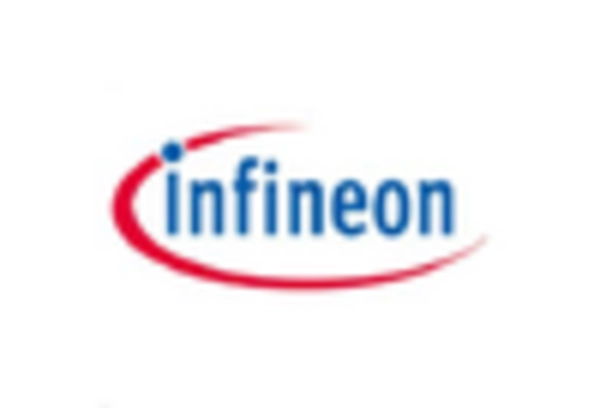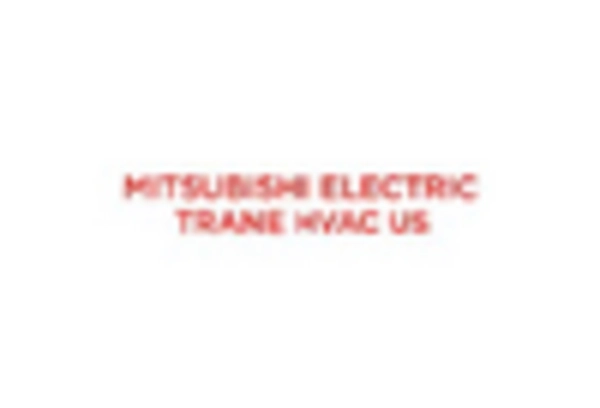Emergence of Smart Grids
The power semiconductor market is poised for growth due to the emergence of smart grids across the United States. As utilities seek to modernize their infrastructure to enhance reliability and efficiency, the demand for advanced power management solutions increases. In 2025, smart grid technologies are expected to contribute significantly to the power semiconductor market, driven by the need for real-time data monitoring and control. The integration of power semiconductors in smart grid applications facilitates better energy distribution, demand response, and integration of renewable energy sources. This trend aligns with national efforts to improve energy resilience and sustainability, further propelling the adoption of innovative power semiconductor technologies. As a result, the power semiconductor market is likely to experience robust growth in response to the evolving landscape of energy management.
Expansion of Data Centers
The power semiconductor market is significantly influenced by the expansion of data centers across the United States. As businesses increasingly rely on cloud computing and big data analytics, the demand for data storage and processing capabilities escalates. In 2025, the data center industry is expected to contribute around 25% to the power semiconductor market. This growth necessitates the deployment of high-performance power semiconductors that can efficiently manage power distribution and thermal management within these facilities. The rising need for energy-efficient solutions in data centers aligns with regulatory pressures to reduce carbon footprints, further driving the adoption of advanced power semiconductor technologies. As a result, companies are investing in innovative power management solutions to enhance the operational efficiency of data centers, thereby propelling the growth of the power semiconductor market.
Growth of Industrial Automation
The power semiconductor market is significantly impacted by the growth of industrial automation in the United States. As industries increasingly adopt automation technologies to enhance productivity and reduce operational costs, the demand for power semiconductors rises correspondingly. In 2025, the industrial automation sector is anticipated to account for approximately 20% of the power semiconductor market. This growth is driven by the need for reliable power management solutions that can support advanced robotics, sensors, and control systems. The integration of power semiconductors in these applications not only improves efficiency but also enables real-time monitoring and control, which are essential for modern manufacturing processes. Consequently, the power semiconductor market is poised to benefit from the ongoing advancements in industrial automation technologies.
Increased Focus on Energy Efficiency
The power semiconductor market is witnessing a heightened focus on energy efficiency, driven by both regulatory mandates and consumer preferences. As energy costs continue to rise, industries are compelled to adopt more efficient power management solutions. In 2025, energy-efficient technologies are projected to represent approximately 40% of the power semiconductor market. This trend is particularly evident in sectors such as industrial automation and automotive, where the integration of power semiconductors can lead to substantial energy savings. Furthermore, government initiatives aimed at promoting energy efficiency are likely to bolster the demand for advanced power semiconductor solutions. Manufacturers are thus incentivized to innovate and develop products that not only meet regulatory standards but also provide long-term cost savings for end-users, thereby enhancing the overall competitiveness of the power semiconductor market.
Surge in Consumer Electronics Demand
The power semiconductor market experiences a notable surge in demand driven by the increasing consumption of consumer electronics. As households and individuals invest in smart devices, laptops, and home automation systems, the need for efficient power management solutions becomes paramount. In 2025, the consumer electronics sector is projected to account for approximately 30% of the overall power semiconductor market. This trend indicates a shift towards more energy-efficient devices, which require advanced power semiconductors to optimize performance and reduce energy consumption. The integration of power semiconductors in these devices not only enhances functionality but also aligns with the growing consumer preference for sustainability. Consequently, manufacturers are compelled to innovate and develop cutting-edge power semiconductor technologies to meet the evolving demands of the consumer electronics market.













Leave a Comment